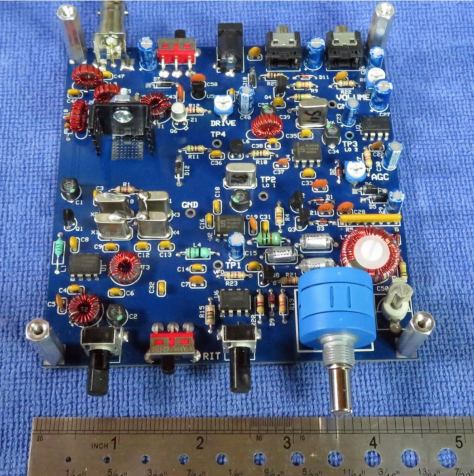 Even before I started taking my Elecraft KH1 to the field and generating reports and activation videos, I started receiving questions from readers and subscribers about how the KH1 might compare with other field-portable radios.
Even before I started taking my Elecraft KH1 to the field and generating reports and activation videos, I started receiving questions from readers and subscribers about how the KH1 might compare with other field-portable radios.
At least 70% of all of these questions asked specifically about the venerable Elecraft KX2.
Making a purchase decision
 I’m not surprised so many are trying to make a purchase decision between the KH1 and KX2.
I’m not surprised so many are trying to make a purchase decision between the KH1 and KX2.
For one thing, the KH1 and KX2 represent some of the smallest, most compact and lightweight shack-in-a-box HF field radios on the market. We’ve a lot of QRP field radios to chose from these days, but few have options for both internal ATUs, internal batteries, and attachable paddles. Very few are as light and compact as either of these two radios.
Another reason for the comparison is that many are in the long queue to purchase a new Elecraft KX2. At time of posting this article, if you place an order for the KX2, you are going to wait a few months for delivery. The KH1 also has a lead time, but it’s likely shorter than that of the KX2 (check out the Elecraft Shipping Status page for more info).
Comparing models
While the KH1 and KX2 have a lot in common, they’re also quite different in many respects.
We radio ops like to compare features and specifications and Elecraft knew the KX2 and KH1 would be compared frequently, so they created a handy chart:
Click here to download Elecraft’s KX2 v KH1 comparison chart (PDF).
At the end of the day, though, I would argue that one’s enjoyment of a radio has more to do with how well it fits the operating style of the owner.
The KX2 is one of the best portable QRP field radios ever made, in my humble opinion. It’s a little high-performance machine that can handle any mode you care to use between 80-10 meters.
 The KH1, on the other hand (pun intended), is designed to be an exceptional handheld radio for pedestrian mobile use and as a super lightweight, low-impact, field portable station. It’s essentially CW-only and operates on 5 bands (40-15 meters).
The KH1, on the other hand (pun intended), is designed to be an exceptional handheld radio for pedestrian mobile use and as a super lightweight, low-impact, field portable station. It’s essentially CW-only and operates on 5 bands (40-15 meters).
If you can be honest with yourself about how you plan to use the radio, it’ll help you make this purchase decision.
For example, if you never see yourself operating pedestrian mobile–you’re more of a sit down at a table sort of op–there’s a good argument to go for the KX2. If, however, you’re an avid SOTA/POTA portable activator who is primarily a CW op and you like the idea of a super quick deployment and handheld operating from anytime, anywhere, you should consider the KH1.
Video
To dig into this comparison a little deeper, I decided to make a video where I discuss the differences between the two radios and also speak to different styles of operating and which radio might suit that style best:
Click here to view on YouTube.
I would be curious which radio you prefer and why. Please consider commenting!
Thank you!
 I hope you found this post and video useful.
I hope you found this post and video useful.
 As always, I’d also like to send a special thanks to those of you who have been supporting the site and channel through Patreon and the Coffee Fund. While certainly not a requirement as my content will always be free, I really appreciate the support.
As always, I’d also like to send a special thanks to those of you who have been supporting the site and channel through Patreon and the Coffee Fund. While certainly not a requirement as my content will always be free, I really appreciate the support.
Patreon supporters have access to 100% ad-free, and downloadable videos for off-line viewing via Vimeo. The Vimeo account also serves as a third backup for my video files. This is how your support truly helps this site and channel!
Cheers & 72,
Thomas (K4SWL)





















































